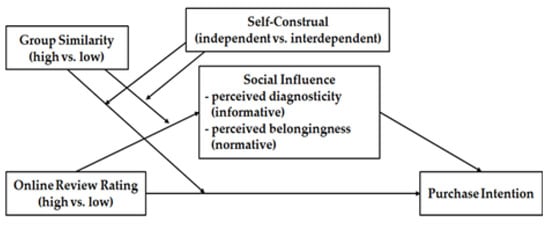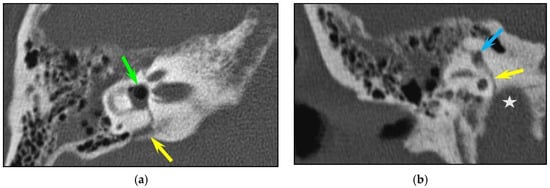The purpose of this experiment was to evaluate the effects of different levels of BSF on rumen in vitro fermentation gas production, methane (CH
4) production, ammonia nitrogen (NH
3-N), and volatile fatty acids (VFAs). The experiment comprised four treatments, each
[...] Read more.
The purpose of this experiment was to evaluate the effects of different levels of BSF on rumen in vitro fermentation gas production, methane (CH
4) production, ammonia nitrogen (NH
3-N), and volatile fatty acids (VFAs). The experiment comprised four treatments, each with five replicates. The control group contained no BSF (BSF0), and the treatment groups contained 5% (BSF5), 10% (BSF10), and 15% (BSF15) BSF, respectively. Results showed that at 3 h, 9 h, and 24 h, gas production in BSF5 and BSF10 was significantly higher than in BSF0 and BSF15 (
p < 0.05). Gas production in BSF5 and BSF10 was higher than in BSF0, while gas production in BSF15 was lower than in BSF0. At 6 h and 12 h, CH
4 emission in BSF15 was significantly lower than in the other three groups (
p < 0.05). There were no differences in the pH of in vitro fermentation after BSF addition (
p > 0.05). At 3 h, NH
3-N levels in BSF10 and BSF15 were significantly higher than in BSF0 and BSF5 (
p < 0.05). At 6 h, NH
3-N levels in BSF5 and BSF10 were significantly higher than in BSF0 and BSF15 (
p < 0.05). Acetic acid, propionic acid, butyric acid, and total VFAs in BSF0, BSF5, and BSF10 were significantly higher than in BSF15 (
p < 0.05). In conclusion, gas production, CH
4 emission, NH
3-N, acetic acid, propionic acid, butyric acid, and VFAs were highest in BSF5 and BSF10 and lowest in BSF15.
Full article
 IJMS
IMPACT
IJMS
IMPACT Applied Sciences
IMPACT
Applied Sciences
IMPACT Sustainability
IMPACT
Sustainability
IMPACT Sensors
IMPACT
Sensors
IMPACT JCM
IMPACT
JCM
IMPACT Materials
IMPACT
Materials
IMPACT Molecules
IMPACT
Molecules
IMPACT Energies
IMPACT
Energies
IMPACT Electronics
IMPACT
Electronics
IMPACT Remote Sensing
IMPACT
Remote Sensing
IMPACT Cancers
IMPACT
Cancers
IMPACT Nutrients
IMPACT
Nutrients
IMPACT Mathematics
IMPACT
Mathematics
IMPACT Foods
IMPACT
Foods
IMPACT Buildings
IMPACT
Buildings
IMPACT Polymers
IMPACT
Polymers
IMPACT Animals
IMPACT
Animals
IMPACT Water
IMPACT
Water
IMPACT Plants
IMPACT
Plants
IMPACT Agronomy
IMPACT
Agronomy
IMPACT Biomedicines
IMPACT
Biomedicines
IMPACT Processes
IMPACT
Processes
IMPACT Microorganisms
IMPACT
Microorganisms
IMPACT Diagnostics
IMPACT
Diagnostics
IMPACT Nanomaterials
IMPACT
Nanomaterials
IMPACT Viruses
IMPACT
Viruses
IMPACT Medicina
IMPACT
Medicina
IMPACT Healthcare
IMPACT
Healthcare
IMPACT Cells
IMPACT
Cells
IMPACT Forests
IMPACT
Forests
IMPACT Agriculture
IMPACT
Agriculture
IMPACT Land
IMPACT
Land
IMPACT JMSE
IMPACT
JMSE
IMPACT IJERPH
IJERPH
 Symmetry
IMPACT
Symmetry
IMPACT Genes
IMPACT
Genes
IMPACT Pharmaceutics
IMPACT
Pharmaceutics
IMPACT Coatings
IMPACT
Coatings
IMPACT Micromachines
IMPACT
Micromachines
IMPACT Pharmaceuticals
IMPACT
Pharmaceuticals
IMPACT Atmosphere
IMPACT
Atmosphere
IMPACT Children
IMPACT
Children
IMPACT Religions
IMPACT
Religions
IMPACT Antioxidants
IMPACT
Antioxidants
IMPACT Life
IMPACT
Life
IMPACT Metals
IMPACT
Metals
IMPACT Biomolecules
IMPACT
Biomolecules
IMPACT Vaccines
IMPACT
Vaccines
IMPACT Education Sciences
IMPACT
Education Sciences
IMPACT Minerals
IMPACT
Minerals
IMPACT Horticulturae
IMPACT
Horticulturae
IMPACT Brain Sciences
IMPACT
Brain Sciences
IMPACT JPM
IMPACT
JPM
IMPACT Bioengineering
IMPACT
Bioengineering
IMPACT
























